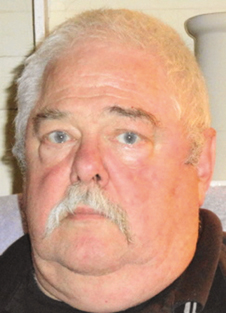This year’s Civil War Weekend in Peterboro went well. As we have for the past several years, we offered a different perspective. This year, it was women’s contributions to that historic time.
It has been common for people to look at such things from the narrow perspective of battles and generals and to overlook and even deliberately ignore other meaningful aspects. So it has been with our Civil War observances and remembrances.
There is documentation regarding some 400 women who were known to have donned uniforms, taken up weapons and joined the men on the battle field. Evidence points to perhaps that many more who did so but whose efforts are insufficiently documented.
Small number when compared to more than 3 million males who served, but women did, in fact, serve by the thousands, and their efforts saved many a life as nurses. Still others contributed, as well, from home: the well-known “care package” burdened many a mail carrier.
Female nurses had a hard time of it initially. The medical profession in America was almost universally male, and a woman’s effort to become a physician was a very hard row to hoe. Some did. But being accepted by the military establishment was even harder.
Women were not supposed to see a non-relative male in a state of undress – and a guy wearing trousers and shirt was undressed if he lacked a vest. Women weren’t considered tough enough to deal with serious illness and war wounds. Their presence was seen as undermining the authority and privilege of male surgeons.
She couldn’t vote or sign a legal contract, what made her think she could tend sick or wounded soldiers?
Well, let’s digress a bit: most adult women in “them-thar days” were farm wives – with a husband, several sons and daughters and two or three male hired hands. If any of those got sick or injured, who took care of them? Mama did…even to the point of dealing with serious lacerations or broken limbs. And these ladies were too weak to handle battle wounds? Uh huh…
Few women served as nurses on the battlefield. So few, that those who were successful at it are remembered: Mary Ann Ball (mother) Byckerdyke among them.
Most nurses for wounded and sick soldiers in camp were other soldiers – primarily their fellow troopers. That did not often go well: young men expected to feed, toilet and change dressings on their comrades? That’s difficult now. Back then, it was nearly impossible.
The wounded usually had to be shipped from the hospitals in the field to a general hospital in places like Philadelphia, New York, Albany – there were 17 general hospitals in the nation’s capitol, and in those institutions, women quickly became indispensable. A soldier could turn up in too bad a shape to feed or even toilet himself, but within hours find himself bathed, spoon-fed, and lying on fresh linen with clean bandages – done at the hands of women who mostly didn’t know the guys at all.
Numerous letters home and diaries written by the soldiers themselves profusely thanked womankind for exemplary care and comfort. Many was the man who would have died had not some woman patiently spoon-fed him for days or even weeks, until he recovered sufficiently to take over his own care.
The Army doctors were, at times, grateful for the help, but one was so distressed by a woman serving as nurse that he complained directly to General Sherman who, knowing of the woman in question, told the surgeon, “She (out) ranks me. If you’ve run afoul of her, you’d best get out while you can!”
The lady’s grave bears testament to her value in granite with the quote “She ranks me!” And such women were not unique to Union army installations; the largest hospital ever built, anywhere in the world, was Chimborazo, just outside the Confederate capitol of Richmond…with more than 7,000 beds at one point, and more than one division was run by women, one named Phoebe Pember.
Women can’t do it? Like hell they can’t!
William D. “Bill” Mayers RT, RN, of Sullivan is a retired senior U.S. Army Corpsman. A certified healthcare professional since 1964, he holds two professional licenses, including that of Registered Professional Nurse licensed in New York, Alaska, Virginia and Louisiana. He has four children, two stepchildren, three grandchildren, a new great-grandchild and is an avid analyst of current events.


